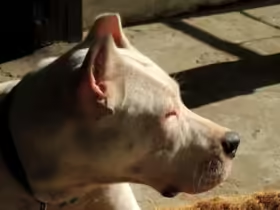Just like humans, dogs and cats can experience anxiety, which can manifest in various ways. Understanding the causes, recognizing the symptoms, and finding effective solutions are crucial for helping your pets live a comfortable and stress-free life. In this blog, we’ll explore the common triggers of anxiety in pets, how to identify anxiety in dogs and cats, and practical ways to manage and alleviate it.
1. Common Causes of Anxiety in Dogs and Cats
a. Separation Anxiety
- Attachment to Owners: Separation anxiety is one of the most common forms of anxiety in dogs and cats. It occurs when pets become overly attached to their owners and experience distress when left alone.
- Triggers: Common triggers include changes in routine, being left alone for extended periods, or moving to a new environment. Pets with separation anxiety may become anxious as soon as they sense their owner is preparing to leave.
b. Fear of Loud Noises
- Sensitivity to Sounds: Dogs and cats can be extremely sensitive to loud noises such as thunderstorms, fireworks, or even household appliances like vacuum cleaners. This sensitivity can trigger anxiety, especially if the noise is sudden and unexpected.
- Negative Associations: Pets may develop negative associations with certain sounds if they have had a bad experience in the past, such as being startled or frightened by a loud noise.
c. Social Anxiety
- Fear of Strangers: Some dogs and cats may experience anxiety around unfamiliar people or animals. This social anxiety can be due to a lack of socialization, past trauma, or a naturally timid temperament.
- Situational Triggers: Situations like visits to the vet, grooming sessions, or encounters with other pets can provoke anxiety, especially if the pet is not accustomed to these experiences.
d. Changes in Environment
- Moving to a New Home: Relocating to a new home or even rearranging furniture can cause anxiety in pets. Dogs and cats are creatures of habit, and any disruption to their familiar environment can lead to stress.
- New Family Members: The introduction of a new family member, whether a baby, another pet, or a roommate, can also cause anxiety as pets may feel threatened or unsure of their place in the household.
2. Recognizing the Symptoms of Anxiety
a. Behavioral Signs in Dogs
- Excessive Barking or Whining: Dogs with anxiety may bark, whine, or howl excessively, especially when left alone or exposed to a stressor.
- Destructive Behavior: Chewing, digging, or scratching at doors and windows are common signs of anxiety in dogs, often stemming from their attempt to escape or relieve stress.
- Pacing and Restlessness: Dogs may pace back and forth, unable to settle down, or display signs of restlessness when they are anxious.
- Changes in Appetite: Anxiety can lead to changes in a dog’s eating habits, including loss of appetite or overeating.
b. Behavioral Signs in Cats
- Hiding or Withdrawal: Cats often respond to anxiety by hiding or withdrawing from their usual activities. They may retreat to a quiet, secluded spot and avoid interaction with family members.
- Excessive Grooming: Over-grooming or compulsive licking is a common sign of anxiety in cats, often resulting in hair loss or skin irritation.
- Aggression: An anxious cat may display aggression towards other pets or people, including hissing, swatting, or biting.
- Litter Box Issues: Anxiety can cause changes in a cat’s litter box habits, such as urinating or defecating outside the litter box.
3. Effective Solutions for Managing Anxiety
a. Creating a Safe Environment
- Comfort Zones: Provide a safe, quiet space where your pet can retreat during stressful situations. This could be a designated room, crate, or cozy bed away from loud noises and disturbances.
- Consistency in Routine: Maintain a consistent daily routine to help reduce anxiety. Pets thrive on predictability, so feeding, walking, and playtime should happen at regular times each day.
b. Behavioral Training and Socialization
- Desensitization: Gradually expose your pet to the source of their anxiety in a controlled and positive way. For example, if your dog is afraid of loud noises, play recordings of the noise at a low volume while offering treats and praise.
- Counterconditioning: Replace the anxious response with a positive one by associating the trigger with something your pet loves, such as a favorite treat or toy.
- Socialization: Early socialization with different people, animals, and environments can help prevent social anxiety. Start with gentle, positive experiences and gradually increase exposure to more challenging situations.
c. Calming Products and Supplements
- Calming Aids: There are various calming products available, such as pheromone diffusers (e.g., Adaptil for dogs or Feliway for cats), which release synthetic versions of natural calming pheromones.
- Supplements: Consider natural supplements like L-theanine, chamomile, or CBD oil (consult your veterinarian first) to help calm your pet’s anxiety.
- Weighted Blankets or Anxiety Wraps: Products like Thundershirts apply gentle pressure to your pet’s body, providing a calming effect similar to swaddling a baby.
d. Professional Help
- Veterinary Consultation: If your pet’s anxiety is severe or persists despite your efforts, consult your veterinarian. They can rule out any underlying health issues and may recommend prescription medications to help manage anxiety.
- Behavioral Therapy: A professional animal behaviorist can work with you and your pet to develop a customized plan to address anxiety, using techniques such as desensitization, counterconditioning, and behavior modification.
- Medication: In some cases, your veterinarian may prescribe anti-anxiety medication to help manage severe anxiety. Medications can be used short-term or long-term, depending on the situation.
4. Preventing Anxiety in Dogs and Cats
a. Early Socialization and Training
- Positive Exposure: Introduce your pet to various people, animals, and environments early on. Positive experiences during this critical period can help prevent anxiety later in life.
- Basic Training: Teach your dog or cat basic commands and behaviors to build their confidence and reduce anxiety. Training should be based on positive reinforcement.
b. Regular Exercise and Mental Stimulation
- Physical Activity: Regular exercise helps to reduce stress and anxiety by releasing pent-up energy. Dogs benefit from daily walks, playtime, and interactive games, while cats enjoy chasing toys or climbing cat trees.
- Mental Enrichment: Engage your pet’s mind with puzzle toys, training sessions, and interactive play. Mental stimulation is just as important as physical exercise for preventing anxiety.
c. Routine Health Check-Ups
- Monitor Health: Regular veterinary check-ups ensure that your pet is in good health, which is crucial for preventing anxiety related to pain or illness.
- Dental Care: Good dental hygiene is essential, as dental pain can be a source of anxiety for pets. Regular teeth brushing and veterinary cleanings can help maintain your pet’s oral health.
5. Conclusion
Anxiety in dogs and cats is a common issue that can significantly impact their quality of life. By understanding the causes and recognizing the symptoms, you can take proactive steps to manage and alleviate your pet’s anxiety. Whether through environmental changes, behavioral training, or professional help, there are many ways to support your pets and help them feel safe and secure. A calm and happy pet is a healthy pet, so taking the time to address their anxiety is an investment in their well-being.











Leave a Reply